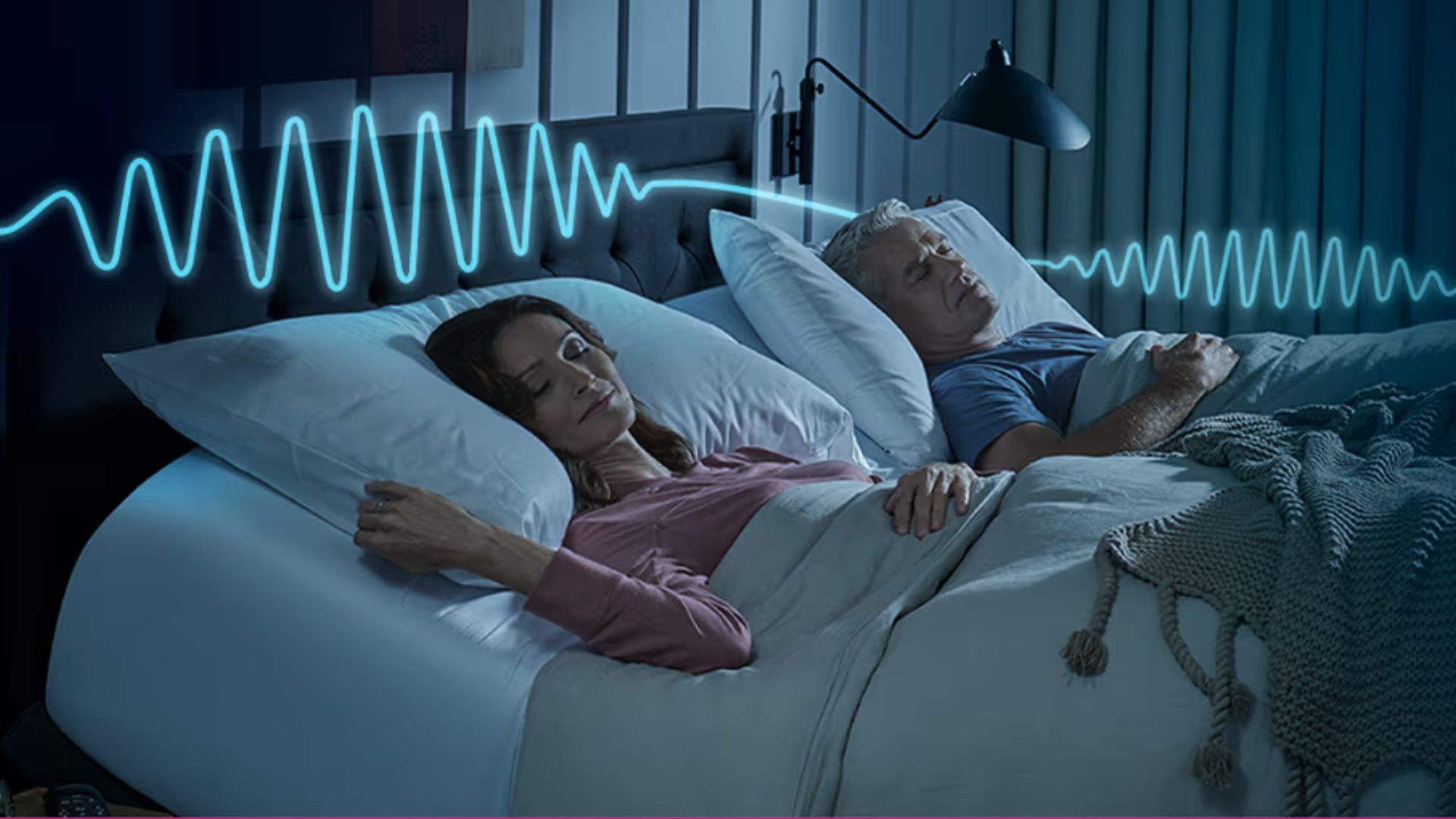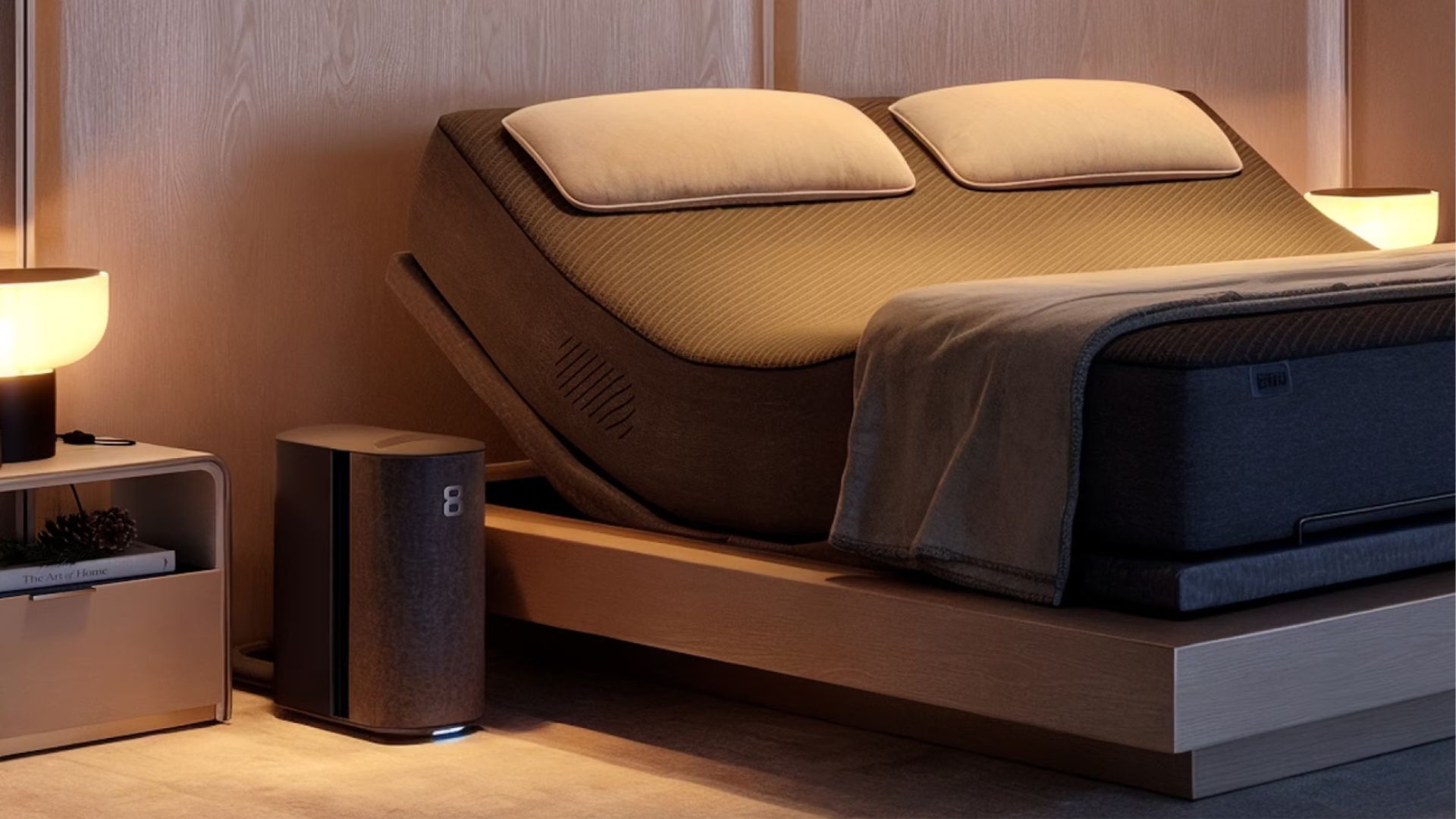Can a smart bed help sleep apnea? A neuroscientist answers
Adjustable and intelligent, here's how a smart mattress can help you manage sleep apnea

If you have sleep apnea, you might be wondering if a smart mattress can help manage symptoms. We put that question to Dr Chelsie Rohrscheib, neuroscientist and head sleep expert at home sleep apnea testing company Wesper.
Sleep apnea is a sleep disorder characterized by your breathing stopping and starting during the night. So while sleeping on the best mattress for your sleep style and body type usually result a quality night's sleep, sleep disorders like sleep apnea may require a more specialized bed.
Designed with cutting edge technology, the best smart beds allow you to personalize your sleep space to target certain sleep needs and get better rest. Below, Dr Rohrscheib walks us though why investing in a smart bed could help manage sleep apnea symptoms. Plus, what features you should look out for.
Granted, smart beds aren't particularly cheap; world-class technology comes with a premium price tag to match. But this year's Presidents' Day mattress sales are here, bringing great deals from leading brands including Sleep Number and Tempur-Pedic, making it a great time to invest.
What is a smart bed?
Smart beds are mattresses or mattress covers that incorporate advanced technology to help you achieve the most optimal environment for sleep. They are primarily known for sleep quality tracking, ultimate comfort and convenience.
Their features include adjustable firmness, temperature regulation, heart rate monitoring, snoring detection and sleep cycle tracking. They allow you to customize your bed to find your ideal sleeping position, firmness level and sleep temperature, while integrated sensors measure your sleep metrics and produce nightly sleep reports, which you can access via compatible apps. You can also pair them with smart bed bases which allows the mattress to change positions.
How a smart bed can help sleep apnea

Monitors breathing
Sleep apnea is a sleep disorder affecting your ability to breathe consistently throughout the night. Smart beds are laced with sensors that track your heart rate, breathing rate and oxygen levels through the night. Keeping an eye on your nightly breathing metrics can help you identify sleep apnea episodes and measure how severe they are. It can also help you identify triggers that worsen your sleep apnea symptoms.
Most smart bed systems are complete with sleep tracking tech. Sleep Number's Sleep IQ technology tracks breathing and is built into their smart mattresses, while Eight Sleep's smart mattress covers are lined with heart and breathing rate sensors and Tempur-Pedic's Sleeptacker-AI monitors how many breaths you take per minute.
"Individuals with sleep apnea experience long pauses in their breathing at night that disrupt the flow of oxygen and reduce their blood oxygen saturation, leading to very poor sleep quality," Dr Rohrscheib explains. "Smart beds that track respiration and breathing quality may be useful to patients with sleep apnea that want a way to track their disorder."
Adjustable positioning
Smart beds with adjustable head positioning, like Tempur-pedic's Tempur-Ergo smart power base and the Eight Sleep Pod 4 Ultra, help sleep apnea by allowing you to sleep in an elevated position. "Sleeping with your head elevated or sleeping at an incline can help to reduce the upper airway blockages that cause sleep apnea," Dr Rohrscheib explains.
Smart beds with automatic snore response are even more beneficial as they adjust your head position automatically as soon as snoring is detected through the night for easier breathing.
Temperature regulation
Hot temperatures can worsen sleep apnea symptoms by making it harder to breathe during sleep. Heat can cause tissues in the throat to swell, potentially leading to more frequent airway obstructions.
Dr Rohrscheib explains: "When the body overheats during sleep, it triggers frequent awakenings and lighter sleep stages, which can increase the number of respiratory events."
Smart beds with temperature regulating air or water systems track your body and room temperature throughout the night and adjust accordingly to keep you at an optimal sleep temperature. This stops you from overheating and reduces the chances of airways blockages. Many of the best cooling mattresses are smart beds for this reason.
Other ways to manage sleep apnea
If you suspect your have sleep apnea, you should always consult with your doctor for a formal diagnosis and guidance on the best course of treatment. Sleep apnea treatments usually include CPAP masks or mouthguards. Below are some ways to manage the symptoms in addition to medical intervention.
1. Gentle exercise
We all know that moving your body is pivotal to longevity and maintaining good health. A recent study found physical activity is a preventive measure for sleep apnea, and it needn't be intense activity.
The research suggests a daily 20-minute walk can reduce your risk of sleep apnea by 10% – and reduce the severity of Obstructive Sleep Apnea overall if you have already been diagnosed. So, if sleep apnea is keeping you up at night, pull on your walking shoes and get your steps in.

2. Lifestyle changes
Alongside exercise, avoiding alcohol and smoking and maintaining a healthy weight can reduce sleep apnea symptoms. Studies have repeatedly shown a correlation between sleep apnea and alcohol consumption. This is because alcohol can slow down breathing and relaxes muscles in the airway, leading to blockages.
Unsurprisingly, smoking inflames the throat, also constricting airways. Furthermore, being overweight means there's excess fat deposits in the neck, which can block the upper airway during sleep. So, a balanced diet and active lifestyle are key to avoiding sleep apnea.
3. Practice good sleep hygiene
Here we mean hygiene in terms of keeping your sleep space clean as well as creating and following healthy sleep habits that can help improve your sleep quality. A clean sleep environment free of dust mites and other allergens will promote healthy breathing through the night.
Dr Rohrscheib also recommends "keeping the room cool and humidified to promote better airway health." She says: "If the bedroom is overly hot and stuffy, this can lead to airway drying, which may make breathing worse."

Additionally, maintaining a consistent sleep schedule where you go to sleep and wake up at the same time each day and establishing a relaxing nighttime routine free of screens will help regulate your circadian rhythm, promoting more restful sleep. Better quality sleep can enable better airway management, reducing the frequency of sleep apnea episodes.
Sign up to get the BEST of Tom's Guide direct to your inbox.
Get instant access to breaking news, the hottest reviews, great deals and helpful tips.

Eve is a PPA-accredited journalist with an MA in Magazine Journalism from Cardiff University. She is a Sleep Staff Writer at Tom’s Guide and has four years’ experience writing health features and news. She is particularly interested in the relationship between good sleep and overall health. At Tom’s Guide Eve is responsible for coverage and reviews of sleep tech and is our smart and cooling mattress specialist, focussing on brands such as Eight Sleep and Sleep Number. She also covers general mattress reviews, seeks out the best deals to produce tried-and-tested buyer's guides for sleep accessories and enjoys writing in-depth features about sleep health. She has been involved in rigorous testing procedures for mattress reviews in our Sleep Studio and has interviewed experts including sleep doctors and psychologists. When not covering sleep at Tom's Guide, Eve enjoys writing about health and fitness, food and culture.
You must confirm your public display name before commenting
Please logout and then login again, you will then be prompted to enter your display name.
